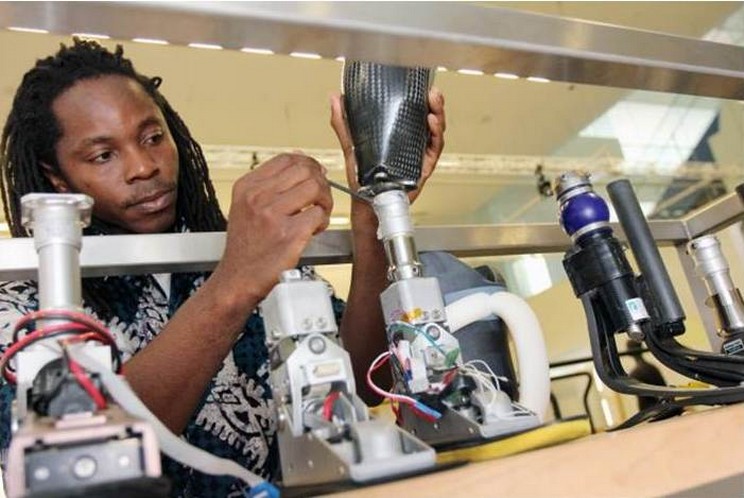|
David Sengeh, from Sierra Leone, is credited with finding a way to load MRI (magnetic resonance imaging) scans of a patient’s limbs onto a multilayer 3D computer to customize Prosthetic Socket Design. In his country, he saw the ravages of the civil war and approached many amputees to understand their pain while wearing prostheses. He then got a scholarship in 2014 and left Sierra Leone to study in Norway. Later, he applied and got accepted into Harvard to study at its School of Engineering and Applied Sciences, before joining MIT’s Media Lab. His specialty or field of study at MIT is Biomechatronics.

In order to avoid the discomfort faced by many amputees wearing conventional prostheses, David Sengeh uses MRI (magnetic resonance imaging) among other tools to precisely measure the shape of patients’ limbs. This includes the precise location of patients’ muscles and bones. He also collects data on limb movement and other body mechanics. The data are then inserted into a computer model that generates a patient-specific design. The custom interface is then built with a 3D printer.

Photo: Allegra Boverman/TED
Conventional prostheses cause discomfort because they are built from molds of patients’ limbs, and then fitted and modified over a series of trial-and-error visits to the doctor’s office. Therefore, most patients do not get a comfortable fit. Instead, they get pressure sores, deep tissue injuries and face other challenges.
In April 2014, David Sengeh was selected as one of four winners of the 2014 Lemelson-MIT National Collegiate Student Prize Competition, a nationwide search for promising young innovators. He was honored with an award for his work on an innovative socket which makes prosthetic limbs more comfortable and functional for amputees.
Sengeh’s innovation has attracted some of the veterans from the U.S. wars in Iraq and Afghanistan who are among the patients working with him at MIT.


